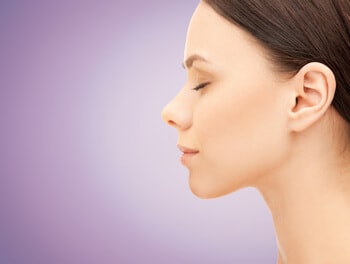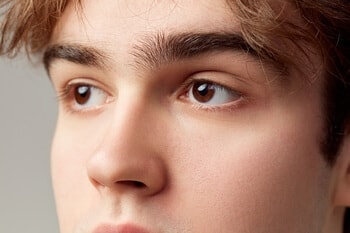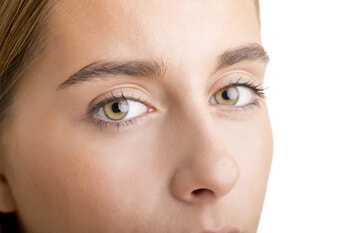Rhinoplasty, commonly known as a nose job, is one of the most sought-after facial cosmetic procedures worldwide. Whether you’re considering a cosmetic enhancement or addressing functional issues like a deviated septum, understanding the healing process is crucial for a successful outcome. This comprehensive guide delves into how long rhinoplasty takes to heal, exploring each stage of recovery, factors that influence healing time, and essential tips to ensure a smooth recovery.
Understanding Rhinoplasty Surgery
Rhinoplasty is a complex procedure that involves reshaping the nasal bones and altering the nasal skin to achieve the desired aesthetic or functional results. Performed by a skilled cosmetic doctor, it can address various concerns, from the size and shape of the nose to breathing difficulties caused by structural abnormalities.
Types of Rhinoplasty Procedures
Rhinoplasty, commonly referred to as a nose job, is versatile and intricate and can significantly enhance the nose’s aesthetic and functional aspects. As one of the most sought-after facial procedures, rhinoplasty offers a range of techniques tailored to meet diverse patient needs. Understanding the various rhinoplasty procedures available is essential for anyone considering this , as each type has unique benefits, indications, and recovery considerations. This comprehensive overview delves into the different types of rhinoplasty, providing insights into their distinct characteristics and how they influence the recovery process.
Open Rhinoplasty
 Open rhinoplasty is one of the most common and widely performed types of nasal . This technique involves making a small incision across the columella, the narrow tissue strip separating the nostrils. By creating this external incision, the doctor gains enhanced visibility and access to the underlying nasal structures, including the bone and cartilage. This increased access allows for more precise adjustments and is particularly beneficial for complex cases requiring significant reshaping.
Open rhinoplasty is one of the most common and widely performed types of nasal . This technique involves making a small incision across the columella, the narrow tissue strip separating the nostrils. By creating this external incision, the doctor gains enhanced visibility and access to the underlying nasal structures, including the bone and cartilage. This increased access allows for more precise adjustments and is particularly beneficial for complex cases requiring significant reshaping.
Advantages of Open Rhinoplasty
- Enhanced Visualization The external incision provides a clear view of the nasal framework, enabling the doctor to make meticulous adjustments.
- Greater Precision Ideal for addressing complex structural issues, such as severe deviations or asymmetries.
- Versatility Suitable for cosmetic enhancements and functional corrections, such as improving airflow through the nasal passages.
Disadvantages of Open Rhinoplasty
- Visible Scar Although the scar is typically minimal and well-hidden between the nostrils, it remains an external mark.
- Longer Recovery Period Due to the additional incision, patients may experience a more extended recovery with increased facial swelling.
Recovery Considerations
Post-operative care for open rhinoplasty involves keeping the head elevated to reduce swollen nasal tissues and facial swelling. Patients are advised to avoid strenuous activities and protect the nose from injury during the initial stages of healing. The rhinoplasty recovery process for open procedures generally spans several weeks, with the most significant swelling subsiding within the first two months. However, subtle changes may continue for up to a year as the nose fully settles into its new shape.
Closed Rhinoplasty
In contrast to open rhinoplasty, closed rhinoplasty involves making all incisions within the nostrils, eliminating any external scars. This approach is less invasive and is typically preferred for patients seeking minor adjustments or prioritising minimizing visible scarring.
Advantages of Closed Rhinoplasty
- No External Scars All incisions are concealed within the nostrils, resulting in a virtually scar-free appearance.
- Shorter Recovery Time The absence of external incisions often leads to a quicker initial recovery with reduced facial swelling.
- Less Invasive Suitable for less complex procedures, making it ideal for patients requiring minor reshaping.
Disadvantages of Closed Rhinoplasty
- Limited Access The doctor has restricted visibility and access to the nasal structures, which may limit the extent of possible adjustments.
- Suitability Best suited for straightforward cases; more complex nose may require an open approach.
Recovery Considerations
The rhinoplasty recovery for closed procedures typically involves less downtime than open rhinoplasty. Patients can expect reduced swollen nasal tissues and facial swelling, most returning to normal activities within one to two weeks. However, adherence to post-operative instructions remains crucial to ensure optimal healing and prevent complications such as infection or structural irregularities.
Revision Rhinoplasty
Revision rhinoplasty, also known as secondary rhinoplasty, is performed to correct or enhance the results of a previous nose . This procedure is often more complex than primary rhinoplasty due to scar tissue, altered anatomy, and the challenges of modifying already healed structures.
Indications for Revision Rhinoplasty
- Unsatisfactory Aesthetic Results Addressing asymmetry, irregular contours, or inadequate reshaping concerns.
- Functional Issues Correct breathing difficulties that persist or have arisen post-.
- Trauma-Related Deformities Repairing structural damage caused by injuries or accidents.
Advantages of Revision Rhinoplasty
- Improved Outcomes This can significantly enhance the nose’s appearance and functionality.
- Customized Solutions Tailored to address specific issues arising from previous surgeries or trauma.
Disadvantages of Revision Rhinoplasty
- Increased Complexity Scar tissue and altered nasal anatomy make the procedure more challenging.
- Longer Recovery Period Due to the intricate nature of the , the healing process may be extended, with a higher risk of complications.
Recovery Considerations
The rhinoplasty recovery timeline for revision procedures can be more prolonged and demanding than primary rhinoplasty. Patients may experience increased facial swelling and must adhere strictly to post-operative care instructions to facilitate proper healing. Regular follow-up appointments are essential to monitor progress and promptly address emerging concerns.
Ethnic Rhinoplasty
Ethnic rhinoplasty is a specialised form that respects and preserves the unique structural and aesthetic characteristics of various ethnic groups. This procedure aims to enhance the nose’s appearance while maintaining cultural identity and facial harmony.
Advantages of Ethnic Rhinoplasty
- Cultural Sensitivity Tailored to respect and preserve ethnic features, ensuring natural and harmonious results.
- Personalized Approach Addresses specific aesthetic goals without compromising cultural identity.
Disadvantages of Ethnic Rhinoplasty
- Specialized Expertise Required Requires a doctor experienced in handling diverse nasal structures and aesthetic preferences.
- Potential for Complications Balancing aesthetic enhancement with cultural preservation can be challenging, necessitating meticulous planning and execution.
Recovery Considerations
 The rhinoplasty recovery process for ethnic rhinoplasty is similar to other rhinoplasty types but may require additional attention to maintain the integrity of ethnic features. Patients should follow post-operative care guidelines meticulously, including keeping the head elevated to reduce swollen nasal tissues and facial swelling. A gradual return to normal activities is advised, with full recovery typically taking several months.
The rhinoplasty recovery process for ethnic rhinoplasty is similar to other rhinoplasty types but may require additional attention to maintain the integrity of ethnic features. Patients should follow post-operative care guidelines meticulously, including keeping the head elevated to reduce swollen nasal tissues and facial swelling. A gradual return to normal activities is advised, with full recovery typically taking several months.
Septoplasty
Septoplasty is a surgical procedure to correct a deviated septum, displacing the nasal septum—the bone and cartilage that divide the nasal cavity. While septoplasty primarily focuses on improving breathing, it is often performed with cosmetic rhinoplasty to enhance function and appearance.
Advantages of Septoplasty
- Improved Breathing Corrects structural obstructions, alleviating breathing difficulties.
- Enhanced Nasal Function Reduces snoring, sinus infections, and nasal congestion symptoms.
Disadvantages of Septoplasty
- Functional Focus Primarily addresses functional issues with limited aesthetic enhancements unless combined with cosmetic procedures.
- Recovery Challenges Due to the intricate nature of the nasal septum, this procedure may involve a more extended recovery period.
Recovery Considerations
Post-septoplasty recovery involves managing facial swelling and ensuring proper healing of the nasal passages. Patients are advised to keep the head elevated to minimize swelling and avoid activities disrupting surgical corrections. The healing process typically spans several weeks, during which patients should refrain from blowing their noses to prevent complications and ensure optimal results.
Non-Surgical Rhinoplasty
Non-surgical rhinoplasty is a minimally invasive alternative to traditional nose . It utilises injectable fillers to alter the shape and contour of the nose without making any incisions. This procedure is ideal for patients seeking subtle enhancements without the downtime associated with surgical interventions.
Advantages of Non-Surgical Rhinoplasty
- Minimal Downtime Quick procedure with immediate results and minimal recovery time.
- Non-Invasive No incisions or anaesthesia are required, reducing the risk of complications.
- Reversible Effects are temporary and can be adjusted or reversed if desired.
Disadvantages of Non-Surgical Rhinoplasty
- Temporary Results Effects typically last six months to two years, necessitating repeated treatments for sustained results.
- Limited Scope Suitable for minor adjustments and cannot address significant structural issues or breathing problems.
Recovery Considerations
The rhinoplasty recovery for non-surgical procedures is swift, with patients experiencing minimal facial swelling and discomfort. Temporary side effects may include mild bruising or swelling at the injection sites, which usually subside within a few days. Maintaining the head’s elevated position is not as critical as in surgical rhinoplasty, but patients should follow their practitioner’s aftercare instructions to ensure optimal results.
Filler-Based Rhinoplasty
Filler-based rhinoplasty is a subset of non-surgical rhinoplasty that employs dermal fillers to achieve desired nasal contours. This approach is particularly effective for correcting minor asymmetries, smoothing out bumps, and enhancing the overall shape of the nose without undergoing traditional .
Advantages of Filler-Based Rhinoplasty
- Non-Invasive Avoids surgical incisions and anesthesia, reducing the risk of complications.
- Immediate Results Enhancements are visible immediately after the procedure.
- Customizable Fillers can be precisely placed to achieve specific aesthetic goals.
Disadvantages of Filler-Based Rhinoplasty
- Temporary Effects Results are not permanent, requiring periodic maintenance.
- Limited Correction Cannot address significant structural issues or functional problems.
Recovery Considerations
 Recovery from filler-based rhinoplasty is minimal, with most patients resuming normal activities almost immediately. Some facial swelling or bruising may occur but typically resolves within a few days. Unlike surgical procedures, there is no need to keep the head elevated, but patients should avoid strenuous activities and follow their practitioner’s guidelines to ensure the best possible outcomes.
Recovery from filler-based rhinoplasty is minimal, with most patients resuming normal activities almost immediately. Some facial swelling or bruising may occur but typically resolves within a few days. Unlike surgical procedures, there is no need to keep the head elevated, but patients should avoid strenuous activities and follow their practitioner’s guidelines to ensure the best possible outcomes.
Alar Base Reduction
Alar base reduction is a type of rhinoplasty focused on narrowing the base of the nostrils, thereby refining the overall appearance of the nose. This procedure particularly benefits individuals with wide or flared nostrils that may detract from facial harmony.
Advantages of Alar Base Reduction
- Enhanced Proportions Creates a more balanced and proportionate nasal appearance.
- Minimal Invasiveness Often performed as an adjunct to other rhinoplasty procedures, requiring minimal additional recovery time.
Disadvantages of Alar Base Reduction
- Specific Focus Targets only the nostril base, limiting overall nasal reshaping.
- Potential for Asymmetry Precise execution is essential to avoid uneven results.
Recovery Considerations
The rhinoplasty recovery process for alar base reduction involves managing facial swelling and ensuring proper healing of the nostril base. Patients should keep their head elevated to minimize swelling and adhere to post-operative care instructions to prevent complications. The recovery period is generally short, with most individuals resuming normal activities within one to two weeks.
The Rhinoplasty Recovery Process
Understanding the rhinoplasty recovery process is essential for managing expectations and ensuring optimal healing. The recovery period varies for each individual and is influenced by factors such as the extent of the , the patient’s overall health, and adherence to post-operative care instructions.
Immediate Post-Operative Phase (0-2 Weeks)
Immediately after the rhinoplasty procedure, patients can expect significant swelling and bruising around the eyes and nose. A nasal splint is typically applied to support the nose’s new shape and minimize movement during the initial healing phase. During this time, it is crucial to keep the head elevated, even while sleeping, to reduce facial swelling and promote proper healing of the nasal tissues.
Rhinoplasty recovery timeline during the first two weeks involves
- Managing Swelling and Bruising Applying cold compresses to the affected areas can help reduce swelling. However, following the doctor’s instructions on when and how to apply them is essential to avoid increasing nasal swelling.
- Rest and Limited Activity Patients are advised to rest and avoid strenuous activities that could elevate blood pressure, potentially leading to increased swelling or bleeding.
- Medication Adherence Taking prescribed medications as directed helps manage pain and prevent infections.
Intermediate Recovery Phase (2-6 Weeks)
Between the second and sixth weeks after , the swelling begins to subside, and patients can resume more regular activities. However, it is still important to avoid activities that might strain the healing tissues or expose the nose to potential injuries.
Key aspects of this phase include
- Splint Removal The nasal splint is usually removed around the second week. Some patients may still have internal packing to support the nasal structures.
- Gradual Return to Activities Light activities can be gradually reintroduced, but contact sports and high-impact exercises should still be avoided to prevent complications.
- Follow-Up Appointments Regular check-ups with the doctor ensure the nose is healing correctly and any concerns are promptly addressed.
Long-Term Recovery (6 Weeks to Up to a Year)
While most healing occurs within the first few months, complete recovery from rhinoplasty can take up to a year. During this period, the nasal bones fully settle into their new position, and any residual swelling diminishes.
Important considerations during long-term recovery include
- Final Shape Settling The nose will continue to refine and settle into its final shape. Subtle changes can occur as tissues heal and adapt.
- Sun Exposure Protecting the nose from excessive sun exposure is vital to prevent discolouration and ensure even healing of the nasal skin.
- Monitoring for Complications Although rare, it is important to stay vigilant for signs of complications such as persistent pain, unusual swelling, or breathing difficulties and consult the doctor immediately if they arise.
Factors Affecting Rhinoplasty Healing Time
Several factors can influence rhinoplasty recovery time, impacting how quickly and smoothly the healing process progresses.
Surgical Technique
The chosen rhinoplasty procedure—open or closed—can affect the recovery timeline. Open rhinoplasty, while offering greater precision, may involve a longer healing period due to the external incision. Closed rhinoplasty generally allows for a quicker initial recovery but might have limitations in addressing more complex structural issues.
Patient Health and Lifestyle
A patient’s overall health plays a significant role in the healing process. Individuals who maintain a healthy diet, avoid smoking, and follow post-operative care instructions tend to recover faster. Conversely, those with underlying health conditions or unhealthy lifestyle habits may experience prolonged healing times.
Extent of Surgery
The complexity of the nose reshaping procedure also affects recovery time. Extensive surgeries involving significant alterations to the nasal bones, septum, or passages typically require a longer recovery than minor adjustments.
Adherence to Post-Operative Instructions
Following the doctor’s instructions diligently is crucial for a smooth recovery. This includes attending follow-up appointments, avoiding activities that could strain the healing tissues, and properly managing swelling and discomfort through recommended methods like cold compresses.
Rhinoplasty Recovery Tips for a Smoother Healing Process
Ensuring a successful rhinoplasty recovery involves proactive measures and adherence to best practices. Here are some essential tips to aid in the healing process
Keep Your Head Elevated
Maintaining an elevated head position, especially while sleeping, helps reduce facial swelling and promotes better blood circulation. For the first few weeks after , use extra pillows or a wedge to keep the head raised above heart level.
Follow a Healthy Diet
A nutritious diet rich in vitamins and minerals supports the body’s healing process. Incorporate foods high in protein, vitamins C and E, and zinc to aid tissue repair and reduce inflammation. Eating plenty of water is equally important.
Use Cold Compresses Wisely
Applying cold compresses to the affected areas can help minimize swelling and bruising. However, following the doctor’s guidelines on the frequency and duration of cold compress application is essential to avoid increasing nasal swelling or causing frostbite to the skin.
Avoid Blowing Your Nose
Refrain from blowing your nose during the initial recovery period to prevent disrupting the healing tissues and nasal structures. If necessary, gently sneeze with your mouth open to alleviate pressure without harming the nose.
Protect Your Nose from Injury
Avoid activities that could result in trauma to the nose, such as contact sports or environments with a high risk of accidents. Wearing protective gear, like a sports mask, can provide extra safety during the recovery period.
Manage Pain and Discomfort
To manage discomfort effectively, take prescribed pain medications as directed. Over-the-counter pain relievers, such as acetaminophen, can also help. Still, it is important to avoid medications like aspirin or ibuprofen unless approved by your doctor, as they can increase the risk of bleeding.
Attend Follow-Up Appointments
Regular follow-up appointments with your cosmetic doctor are crucial to monitor the healing progress and promptly address concerns. These visits allow the doctor to ensure that the nasal structures are healing correctly and to make any necessary adjustments to the recovery plan.
Protect Your Nose from Sun Exposure
Excessive sun exposure can lead to skin discolouration and affect the healing of the nasal skin. Wearing a broad-brimmed hat or a high-SPF sunscreen on the nose can protect the area from harmful UV rays.
Maintain a Calm and Positive Mindset
 A positive attitude and patience are essential during the recovery process. Understanding that healing takes time and adhering to your recovery plan can significantly enhance the overall outcome of your rhinoplasty procedure.
A positive attitude and patience are essential during the recovery process. Understanding that healing takes time and adhering to your recovery plan can significantly enhance the overall outcome of your rhinoplasty procedure.
When to Contact Your Doctor
While most patients experience a smooth recovery, certain signs may indicate complications that require immediate attention. It is important to contact your doctor immediately if you encounter
Severe Pain
Intense or worsening pain beyond the expected discomfort levels.
Excessive Swelling or Bruising
Swelling that does not decrease over time or severe bruising that interferes with breathing.
Unusual Bleeding
Persistent or heavy bleeding from the nose or incisions.
Signs of Infection
Redness, warmth, increased pain, or discharge from the surgical site.
Difficulty Breathing
Significant obstruction or breathing difficulties that are not improving.
Asymmetry or Irregularities
 Noticeable asymmetry or irregularities in the shape of the nose that were not present initially.
Noticeable asymmetry or irregularities in the shape of the nose that were not present initially.
Promptly addressing these issues with your doctor can prevent further complications and ensure a smoother recovery.
Conclusion
Rhinoplasty is a transformative procedure that can significantly enhance the appearance and functionality of the nose. Understanding how long it takes to heal and the factors that influence the recovery process is essential for achieving the best possible results. Following your doctor’s instructions, maintaining a healthy lifestyle, and being patient with the healing process can ensure a successful recovery and enjoy the benefits of your new nose.
Ready to take the next step towards your desired transformation? Please contact us today at (02) 8880 5116 to schedule a consultation with our expert team. Let us help you achieve the nose you’ve always wanted with care and precision.
References
https://www.nhs.uk/conditions/cosmetic-procedures/cosmetic-/nose-reshaping-rhinoplasty/
https://my.clevelandclinic.org/health/treatments/11011-rhinoplasty#:~:text=You’ll%20have%20swelling%20for,is%20usually%20after%20one%20year.
https://www.cosmetic.org/news/articles/what-to-expect-from-your-rhinoplasty-recovery

